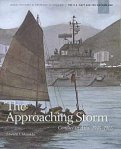 The United States Navy celebrates its birthday on October 13th each year. This date commemorates the day in 1775 when the Continental Congress authorized the purchase of two armed vessels to attack British ships during the American Revolution. This marked the beginning of the Continental Navy, which later became the United States Navy. In celebration of the many responsibilities of the U.S. Navy, we’re highlighting resources focusing on its role in scientific endeavors supporting military and civil water navigation safety.
The United States Navy celebrates its birthday on October 13th each year. This date commemorates the day in 1775 when the Continental Congress authorized the purchase of two armed vessels to attack British ships during the American Revolution. This marked the beginning of the Continental Navy, which later became the United States Navy. In celebration of the many responsibilities of the U.S. Navy, we’re highlighting resources focusing on its role in scientific endeavors supporting military and civil water navigation safety.
The Astronomical and Nautical Almanac are jointly published by the United States Naval Observatory and Her Majesty’s Nautical Almanac Office in the United Kingdom.
The Astronomical Almanac is a comprehensive publication that contains data on a wide range of astronomical phenomena, including the positions of planets, moons, stars, and other celestial objects; the times of eclipses and other events; and information on the Earth’s rotation and motion. It is used by astronomers, navigators, and other scientists for a variety of purposes, such as planning observations, calculating trajectories, and understanding the dynamics of the solar system.
The Nautical Almanac is a subset of the Astronomical Almanac that contains the data needed for celestial navigation. It was first as part of the American Ephemeris and Nautical Almanac and then to provide the US Navy with a convenient form of astronomical data for celestial navigation. This includes the positions of the Sun, Moon, stars, and planets at specific times and dates. This book remains the standard resource for marine celestial navigation for the U.S. Navy and is still used today as a backup to GPS and other electronic navigation systems. Safety on the water is essential whether navigating on a “Dingey” or a massive Naval Carrier.
is a subset of the Astronomical Almanac that contains the data needed for celestial navigation. It was first as part of the American Ephemeris and Nautical Almanac and then to provide the US Navy with a convenient form of astronomical data for celestial navigation. This includes the positions of the Sun, Moon, stars, and planets at specific times and dates. This book remains the standard resource for marine celestial navigation for the U.S. Navy and is still used today as a backup to GPS and other electronic navigation systems. Safety on the water is essential whether navigating on a “Dingey” or a massive Naval Carrier.
Here are some ways to celebrate the Navy Birthday:
- Attend a Navy Birthday celebration at a local Navy base or community center.
- Fly the Navy flag or wear a Navy shirt.
- Learn more about the Navy’s history and heritage.
- Read a book or watch a movie about the Navy.
- Donate to a Navy-related charity.
- Thank a Sailor for their service.
No matter how you choose to celebrate, take some time to honor the United States Navy on its birthday.
The GPO Online Bookstore – Easy Access to Federal Publications
HOW DO I OBTAIN THESE RESOURCES?
Sign up to receive promotional bulletin emails from the US Government Online Bookstore.
Shop Online Anytime: You can buy a vast majority of eBooks or print publications —with FREE Standard Shipping worldwide— from the U.S. Government Online Bookstore at https://bookstore.gpo.gov.
- Click here to purchase Astronomical Almanac For The Year 2023
- Click here to purchase Nautical Almanac For The Year 2024
Order by Phone or Email: Call our Customer Contact Center Monday through Friday, 8 am to 4:30 pm Eastern (except US Federal holidays). From US and Canada, call toll-free 1.866.512.1800. DC or International customers call +1.202.512.1800. Email orders to ContactCenter@gpo.gov
Visit a Federal depository library: Search for U.S. Government publications in a nearby Federal depository library. You can find the records for most titles in GPO’s Catalog of U.S. Government Publications.
Find more than a million official Federal Government publications from all three branches at www.govinfo.gov.
About the author: Blogger contributor Ed Kessler is a Promotions Specialist in GPO’s Publications and Information Sales Office.
Images and additional content provided by Government Book Talk Editor Trudy Hawkins. Trudy is the Senior Marketing & Promotions Specialist in GPO’s Publication & Information Sales Office supporting the U.S. Government Online Bookstore (https://bookstore.gpo.gov).



 Posted by Trudy Hawkins
Posted by Trudy Hawkins 

















